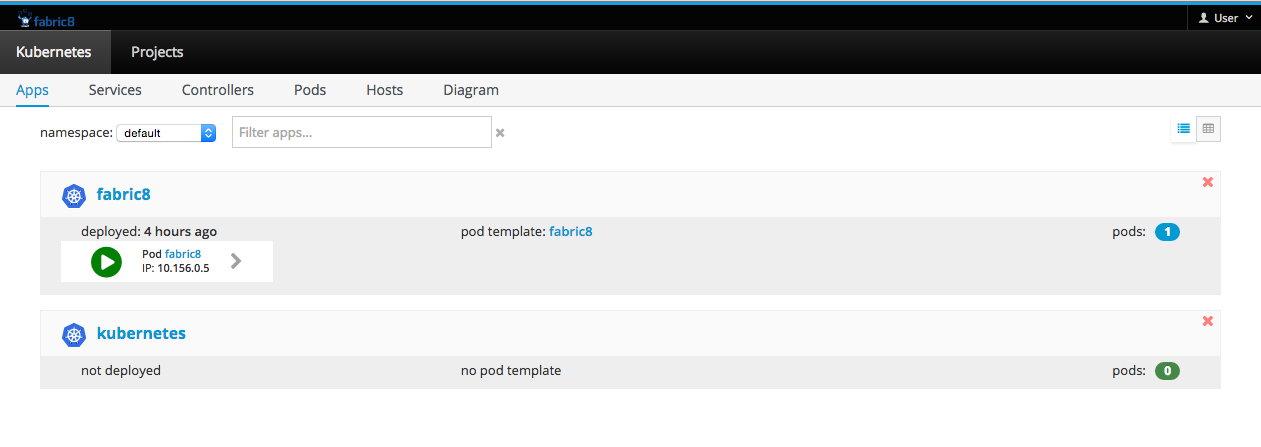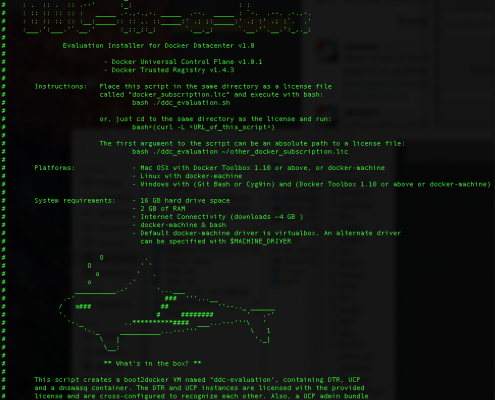- I have tried with the latest version of Docker Desktop I have tried disabling enabled experimental features I have uploaded Diagnostics Diagnostics ID: Expected behavior I'm trying to login to a remote registry that can be accessed via a.
- I'm trying to use a self hosted docker registry v2. I should be able to push a docker image, which does work locally on the host server (coreos) running the registry v2 container. However, on a separate machine (also coreos, same version) when I try to push to the registry, it's try to push to v1, giving this error.
Reference for the API served by Docker Engine. Reference documentation and Swagger (OpenAPI) specification for the vv1.40 version of the API served by Docker Engine. バージョン指定をつけなかった場合は、現行最新の API(v1.40)が用いられます。. (JSON) 文字列による X-Registry-Auth ヘッダーとして.
Matthew Riley (mattdr@google.com)
This document summarizes the interactions between the Docker client and the Docker Hub during push and pull commands through version 1 of the registry API. It was compiled to aid in writing a compatible registry server implementation after the existing API documentation proved occasionally incomplete or inaccurate.
Behavior and code links were as of Docker v1.2.0.
docker {push|pull} H:P/R[:T]
Host, Port, Repository ([namespace/]image), Tag
Life of a docker pull
GET H:P/v1/repositories/R/imagesAuthorization: Basic abcX-Docker-Token: true
ResponseX-Docker-Token: xyzX-Docker-Endpoints: server1, server2
Split list on commas, then trim spaces from entries. (ref)
[{'checksum': 'abc', 'id': '123'}, ...]
JSON array of objects, one per image
GET server1/v1/repositories/R/tags
server is from X-Docker-Endpoints returned aboveAuthorization: Token xyz
token is from X-Docker-Token returned above

Response{'tagname1': 'image_id1', ...}
JSON object, one field per tag
Compute the union of the images list and the set of tagged images.
If no tag was specified, download all images with tags. Otherwise only download the one with a matching tag. Untagged images are ignored.
For each image:
GET server1/v1/images/IMAGEID/ancestryAuthorization: Token xyz
Response['self_imageid', 'parent_imageid', ..., 'root_imageid']
JSON array of image IDs as strings. Order is important! Starts with self, ends with root.
GET server1/v1/images/IMAGEID/jsonAuthorization: Token xyz
ResponseX-Docker-Size: 123
Size of corresponding layer. Older Docker clients require this; newer ones allow it to be absent and substitute -1.
Response body is a JSON-formatted Image object.
GET server1/v1/images/IMAGEID/layerAuthorization: Token xyz
Response
Image contents
The Docker client will try to do a resumable transfer if the server returns 'Accept-Ranges: bytes'.
Life of a docker push
Docker Registry Https
Prepare a list of all images in repository, with parents before children. From the returned list, create an array of ImgData values with Id and Tag set.
If an image is tagged multiple times then there is an (ID, Tag) pair for each tag. If an image is untagged, it is implicitly tagged as '. (The Tag field is omitted in JSON if it's empty, so what’s the point?)
Session.PushImageJSONIndex (validate = false)
PUT H:P/v1/repositories/R/Content-Type: application/jsonAuthorization: Basic abcX-Docker-Token: true
Docker Registry Api Examples
Request is a JSON array of ImgData values. Only ID (as 'id') and Tag are set. In encoding, Tag is omitted if empty.
ResponseX-Docker-Token: xyzX-Docker-Endpoints: server1, server2
Manually handles arbitrarily many redirects (300 <= ResponseCode < 400). Each redirect sends the request as before.Server response code must be 200 or 201 for success.
Docker For Mac V1 Registry Api Version

For each image:
GET server1/v1/images/IMAGEID/jsonAuthorization: Token xyz
TagStore.pushImage (if the request to /json in LookupRemoteImage did not return 200)
PUT server1/v1/images/IMAGEID/jsonContent-Type: application/jsonAuthorization: Token xyz
Body is JSON formatted Image object.
PUT server1/v1/images/IMAGEID/layerContent-Type: application/octet-streamTransfer-Encoding: chunkedContent-Length: -1Authorization: Token xyz
Layer (.tar.gz) is read through TarSum.Read to create request body.
TarSum is frightening. Let's never use it for image authentication or identity.
PUT server1/v1/images/IMAGEID/checksumAuthorization: Token xyzX-Docker-Checksum: tarsum+sha256:a0b1c2...
The TarSum calculated above.X-Docker-Checksum-Payload: sha256:a0b1c2...
Payload checksum is 'sha256:' + SHA256(json + 'n' + PAYLOAD), where PAYLOAD is the tar+gz’d layer that was actually sent as the request body.
For each of the image's tags:
PUT server1/v1/repositories/R/tags/TAuthentication: Token xyzContent-Type: application/json
Request body is 'IMAGEID' (with quotes).
Session.PushImageJSONIndex (validate = true)
PUT H:P/v1/repositories/R/imagesAuthentication: Basic abc
There doesn't seem to be a good reason here to use Basic authentication rather than the existing Token.
Request body is an array of ImgData values, same as before, except only images with a checksum set are included -- i.e. only the images uploaded this session.
Response
Server must return 204 on success.

Common infrastructure
Cookies
The Docker client keeps a per-session set of cookies that is used and updated on each request. Cookies are not persisted across sessions.
Docker For Mac V1 Registry Api Software
The Docker Hub used to use these cookies for authentication, but stopped -- see the discussion in issue 330 for some context. As of this writing, quay.io still uses cookies for authentication. Since Docker Hub doesn't use cookies, there's some question as to whether they'll be tested or keep working in future Docker client versions. It may be more robust to return data in the authentication token.